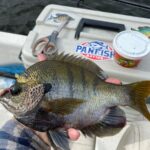Bluegill are perhaps the most common cohabitant of largemouth bass in their native range and in introduced waters around the world.
For that reason alone, they make a fantastic live bait option that is exciting and very effective.
In this article, I’m going to talk about using bluegill for bass bait, and how you could catch your new personal best using this method.
Note: Always check the fishing regulations in your area. Some states and water bodies do not allow the use of bluegill and other sunfish as live bait.
Table of Contents
Why Use Bluegill as Bass Bait?
One of the reasons bass fishing is so popular is because there are so many different ways to catch and pursue these awesome gamefish.
One popular (and sometimes controversial method) is by using live bluegill to target big bass.
Bass love to eat bluegill! Largemouth bass, smallmouth bass, and spotted bass will all eat bluegill.
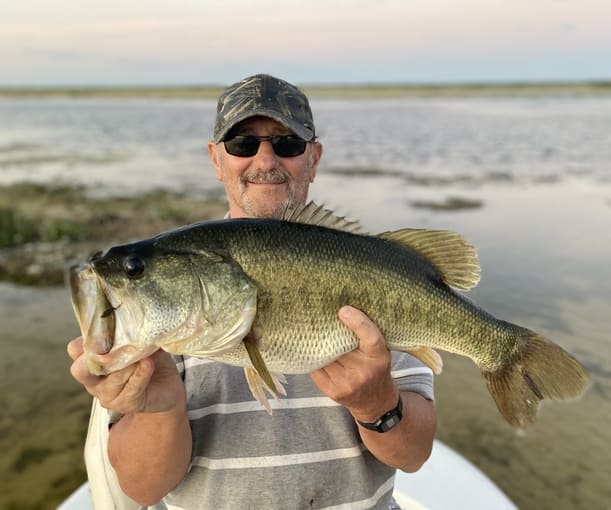
Fortunately, bluegill are abundant, easy to catch, and make great live bait for bass fishing!
One of the world record largemouth bass was caught on live bluegill! This record-breaking bass was caught in 2009, by Manabu Kurita from lake Biwa, Japan, and it weighed an incredible 22lbs and 4 ounces!
Kurita was fishing with live bluegill along a bridge piling when he hooked his giant record bass.
Bluegill works very well as live bait for bass. They are durable and resilient live baits, so they will stay alive longer than shiners.
Plus, bass aren’t the only fish that love eating bluegill, so don’t be surprised if you catch other species, like catfish, bowfin, gar, or pike!
How to Target Big Bass with Live Bluegill
There are a few different ways to target big bass with live bluegill.
Shallow Water (Float Rig)
In the shallows, float rigs are most frequently used for bass fishing. Especially in Florida, where lakes and ponds are quite shallow, live bluegill under a float is super effective on the giant Florida bass.
In clearer water, where floats may deter a bite from wary fish, freelining (no float) is ideal. This rigging style allows the live bluegill to swim naturally through the water column.
The downside to this technique is that the bluegill can freely swim into and around snags like lily pads or submerged trees.
Use the float rig around snags. Set the float depth to suspend the bluegill above the snags. Also, watch your float so that the bluegill doesn’t wrap you up into grass or lily pads.
This method is very effective if you can position your boat (or fish from shore) so that the wind blows your bluegill back into the structure, allowing you to hold it just on the edge of the structure or snags.
Related: Why Does My Pond Only Have Small Bass? Here’s Why!
Deep Water (Carolina Rig)
In deeper water, you can effectively fish weighted rigs. Carolina rigs and split shot rigs work great to help your bait reach the deeper water and to stay near or on the bottom. Adjust the weight of your rig depending on the depth and current you’re fishing.
This method can be very effective during the summer and winter months when bass seek deepwater refuge.
Slow drifting live bluegill on a carolina rig in a deepwater basin is a great way to locate fish, and you never know what else you may catch!
Be aware of how heavy your weight is. Using too heavy weight will impede the bluegill’s ability to swim naturally.
What Size Bluegill Should You Use?
3″ to 5″ bluegill is the ideal size to use when targeting largemouth bass.
If you want to specifically target large bass only, use big bluegill around 5″. Keep in mind you will likely need to increase your hook size and float size to accommodate the larger-sized bait.
How to Hook Live Bluegill for Bass Fishing
There are a number of ways to hook live bluegill for bass fishing, but you must be careful when hooking live bait.
Avoid hooking through areas that will impede the fish’s ability to swim, like the brain, eyes, and vertebrae. Hooking through these areas will quickly kill the bluegill, making it a less appealing bait to bass.
Hook live bluegill through the upper lip, flesh below the soft dorsal fin or above the soft anal fin. This method helps them swim naturally through the water.
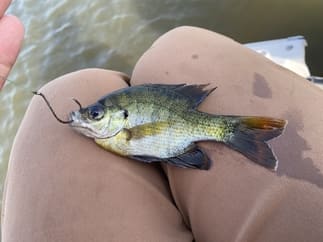
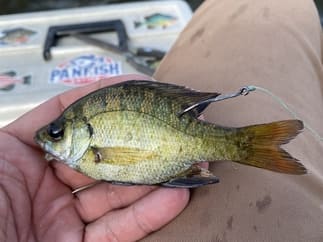
If you are frequently casting and retrieving your bluegill, or trolling, you can hook your live bluegill through the lips. That way when you pull the bluegill, it swims straight and looks natural.
PRO TIP! When hooking the bluegill, check the hook and remove any scales which may be left on the hook point. This happens fairly often, and if left on, will impede your hookset.
Be careful not to hook your live bluegill too many times, because this will injure the fish more and shorten its life as live bait.
Also, be careful not to hook yourself when hooking the live bait. It’s easy to let the fish flop out of your hand.
Related: How To Hook A Shiner – 5 EASY Methods!
What Hooks to Use for Live Bluegill?
The hook size depends on the size of the bluegill and how you are fishing. You want to make sure that there is plenty of hook gap between the point of the hook and the shank of the hook.
If the hook gap is impeded by the flesh of the fish, upsize your hook or use a smaller bait.
For example, if I’m using a 3-inch bluegill, I will use a 2/0 hook. If I’m using a five-inch bluegill, I might use a 4/0 size hook.
For bass fishing, Circle Hooks, Kahle Hooks, Octopus Hooks, and J-Hooks are all viable options.
Remember when fishing circle hooks, a steady retrieve is all that is necessary to set the hook.
Other styles such as Kahle hooks or Octopus hooks require a strong hookset to set the hook.
I strongly recommend using circle hooks, they are proven to significantly reduce the chances of a swallowed hook!
Is it Legal to Use Live Bluegill as Bait for Bass Fishing?
It depends on your state and local regulations. In some states, live bait fishing may be illegal in some bodies of water, so always check your local regulations.
You should be prepared to identify other species of panfish in your area, and you should be familiar with the regulations for them as well.
In Florida, for example, you are allowed to use live bluegill for bait as long as they were caught legally, by hook and line, and not by cast nets or traps.
The other species of common sunfish, such as spotted sunfish ( stumpknocker ), red-ear sunfish, redbreast sunfish, and warmouth, follow the same regulations as bluegill.
Last But Not Least, Don’t Be Wasteful!
If you have some leftover live bait, or if some of your live bait perished before you’re done fishing, keep them for later to use as dead bait. This could save you from having to catch more bluegill on your next trip.
While dead bait is not as good for bass fishing, it is still perfectly good for other bottom-feeder species like catfish, bowfin, and gar.
Store them in your freezer and take them out next time for some cut-bait fishing.
You May Also Like: Are Largemouth Bass Good To Eat? & Should You Keep Them?
If you haven’t guessed yet, I love fishing and everything about it!
To learn more about why I started Panfish Nation, visit the About page and follow along on Social Media:


Download a copy of my FREE Lure Color Selection Chart & Knot Guide!
Stay up to date with fishing reports, tackle reviews, industry news, and much more! We respect your privacy, unsubscribe at any time.
Related Posts
- Sauger vs Walleye: Learn These Differences and Catch More!

- Crazy Facts About the World Record Crappie

- What Size Hooks for Smallmouth Bass? Quick Guide

- Large and in Charge-Mouth: 10 of the Best Bass Lures of All Time (And Where to Buy Them)

- Emperor of the Sun(fish): What You Need to Know About the World Record Bluegill
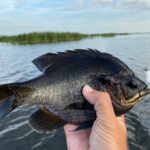
- Coppernose Bluegills: How They’re Different from Common Bluegill
